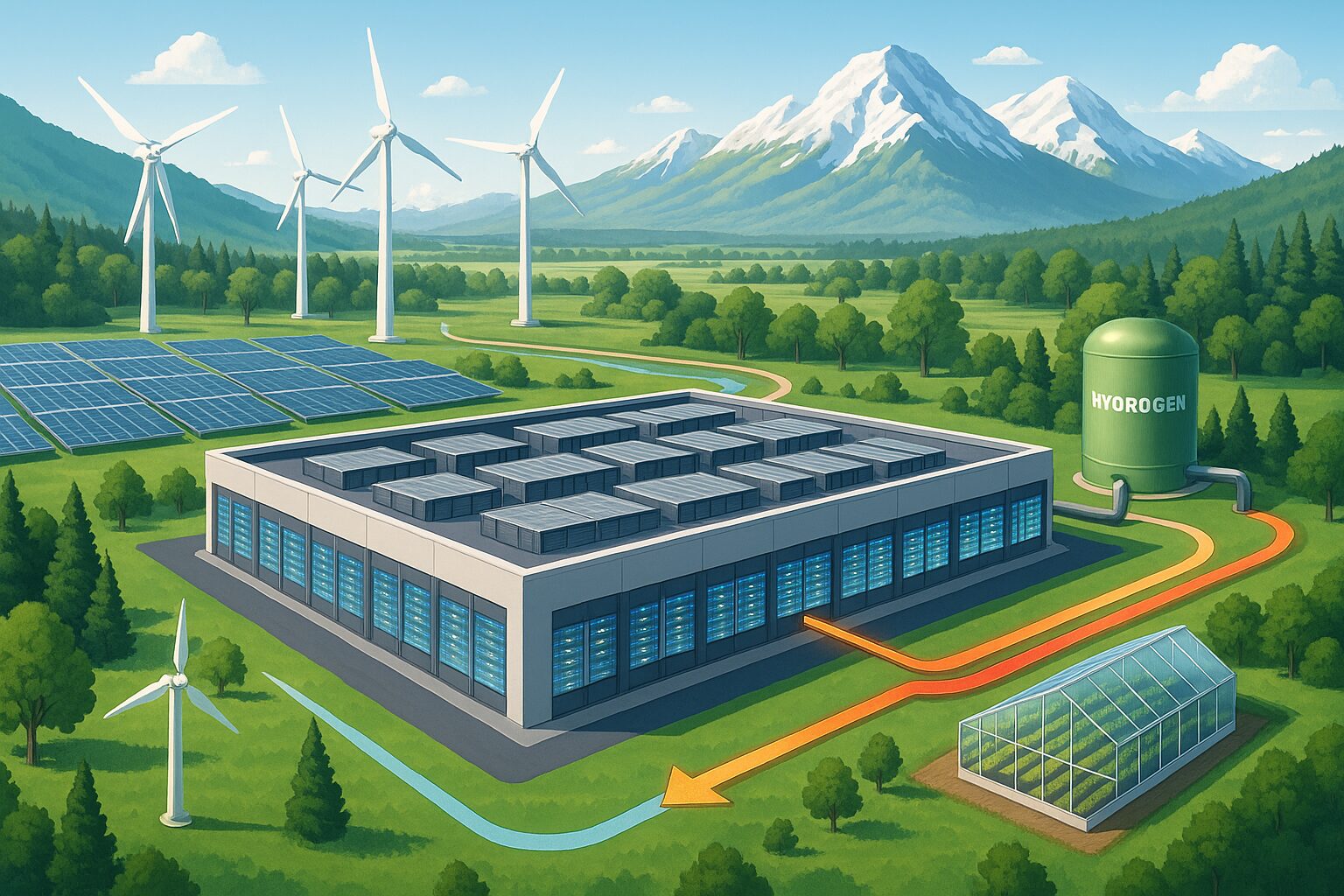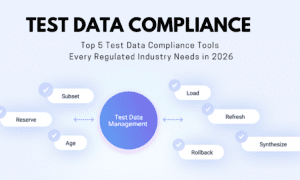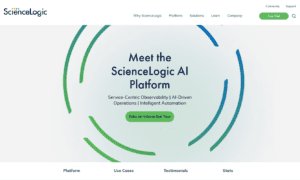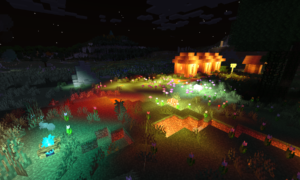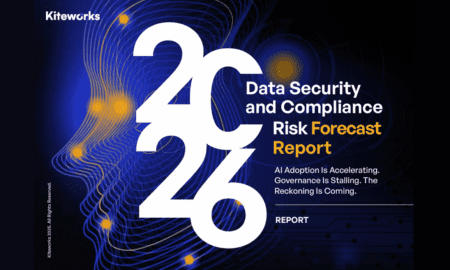Travis Jank stands at the forefront of a revolutionary transformation in data center infrastructure, where artificial intelligence meets environmental stewardship. As President and Founder of KRAMBU, Inc., Jank is pioneering what he calls “regenerative AI infrastructure,” a paradigm shift that reimagines data centers not merely as energy consumers, but as integrated ecosystems that actively contribute to environmental restoration and community benefit.
With major developments underway including a 100MW facility in Montana and an ambitious 1.21GW hyperscale development in Pennsylvania, Jank’s vision extends far beyond conventional sustainability measures. By eliminating synthetic refrigerants, converting waste heat into useful energy for agriculture and aquaponics, and integrating green hydrogen systems, KRAMBU is setting new standards for how technology infrastructure can serve both computational demands and environmental goals.
We sat with Travis Jank to discuss the future of AI infrastructure in the context of regenerative data centers:
1. Can you explain your concept of “regenerative AI infrastructure” and how it fundamentally differs from traditional sustainable data center approaches? What inspired you to move beyond simply reducing environmental impact to actually creating positive environmental outcomes?
Travis Jank. At KRAMBU, “regenerative AI infrastructure” means building data centers that don’t just minimize environmental harm—they actively give back more than they take. Traditional “sustainable” approaches focus on reducing emissions, improving energy efficiency, or minimizing water usage. While important, those goals still operate within a framework of mitigation. We believe that’s not enough.
Regenerative infrastructure takes it further. Our data centers integrate direct liquid cooling, industrial symbiosis, and renewable energy—like solar, biomass-to-energy, and green hydrogen—not just to reduce consumption, but to create net-positive environmental and community outcomes. We capture and reuse waste heat for agriculture, aquaponics, and building heating; we eliminate harmful refrigerants; and we create grid-stabilizing systems by pairing AI compute with battery storage and natural gas generation.
The inspiration for this shift came from years of working at the edge of what’s possible in high-performance computing—where every watt matters—and from watching legacy infrastructure fail to evolve meaningfully. We saw an opportunity to design something fundamentally better: AI factories that fuel innovation, local economies, and environmental recovery. Regeneration isn’t just a feature of our data centers—it’s the foundation of how we build.
2. Your partnership with Supermicro centers on their Data Center Building Block Solutions (DCBBS). How does this modular architecture specifically enable your integration of direct liquid cooling, industrial heat reuse, and renewable-hydrogen energy systems? What technical challenges have you encountered in combining these technologies?
Travis Jank. Supermicro’s DCBBS platform gives us the modular flexibility we need to integrate advanced technologies like direct liquid cooling (DLC), industrial symbiosis, and renewable-hydrogen energy at scale. Because DCBBS is designed as a full-stack solution—from GPU nodes to rack-level and facility-wide systems—it allows us to implement high-density, liquid-cooled architectures without re-engineering every component from scratch. That’s critical when deploying in complex environments with renewable generation, variable workloads, and heat reuse applications.
The modularity makes it easier to align our engineering across three domains: compute, thermal management, and energy. For instance, we can deploy DLC-enabled Supermicro racks with custom manifolds and control systems that seamlessly integrate into our BESS thermal energy storage and Elkhorn hydrovaporization systems. At the same time, the platform’s scalability allows us to design energy flows around co-located hydrogen generation or battery storage without disrupting server performance.
Of course, there have been challenges. Balancing flow rates, heat exchange, and coolant compatibility across DLC loops and external heat reuse systems takes precision—especially when moving from megawatt-scale labs to 100MW+ campuses. Matching server thermal profiles with dynamic energy resources, such as hydrogen or solar, requires custom software tuning and real-time workload orchestration. But the DCBBS platform has given us a strong and adaptable foundation to solve those problems quickly.
3. You’re planning significant deployments including a 100MW facility in Montana and a 1.21GW development in Pennsylvania. How do you approach the scaling challenges of these regenerative systems, and what factors determine site selection for your integrated energy ecosystems?
Travis Jank. Scaling regenerative infrastructure is vastly more complex than building traditional data centers—it requires orchestrating power generation, thermal management, compute, and community integration into one cohesive system. At KRAMBU, we’ve developed a framework that starts with what we call “industrial symbiosis mapping.” This means looking at a potential site not only for its electrical and physical capacity, but also for its potential to create beneficial energy loops with surrounding industries, agriculture, and utilities.
When we evaluate a site for a regenerative AI factory, we consider five core factors:
- Energy diversity and reliability—preferably with stranded, renewable, or dispatchable resources like natural gas, biomass, or hydrogen.
- Thermal off-take potential—whether local agricultural or industrial partners can use waste heat.
- Water availability and compatibility—especially important for our Elkhorn 970 hydrovaporization system.
- Community alignment—zoning, workforce readiness, and local appetite for technology-driven economic development.
- Scalability and grid access—for both import and export, including demand response and microgrid capabilities.
The key to managing scale is modularity. We deploy in blocks—modular compute, modular power, modular cooling—allowing us to test, refine, and replicate success. Our approach is to build regenerative systems that improve with scale—where added capacity brings not just more performance, but better environmental and community outcomes. That’s a fundamental shift in how infrastructure is typically designed.
4. Your model includes converting waste heat for agriculture and aquaponics, creating what you call “industrial symbiosis.” Can you walk us through how these systems work in practice and describe the broader community benefits you’re seeing or anticipating from this approach?
Travis Jank. Industrial symbiosis is about designing data centers not as isolated power consumers—but as energy participants that give more than they take. In our model, the waste heat from direct liquid-cooled GPU clusters is captured and redistributed through a thermal loop to serve adjacent agricultural or commercial operations.
Here’s how it works in practice:
- Step 1: Heat Capture – Our server racks use closed-loop direct liquid cooling (DLC) systems. That coolant exits the racks at elevated temperatures, often over 50°C.
- Step 2: Thermal Buffering via TESS – We route the heated coolant through a Thermal Energy Storage System (TESS) that acts like a thermal capacitor, capturing and holding heat for later redistribution.
- Step 3: Productive Reuse – This stored heat is piped to on-site or nearby greenhouses, aquaponic farms, or food processing operations—offsetting or eliminating their fossil fuel-based heating loads.
- Step 4: Community Integration – In some locations, the thermal energy also supports local district heating, recreation facilities, or small-scale industrial tenants co-located on our campuses.
The broader benefits are significant. We’re reducing carbon emissions not only at our sites, but also for local businesses that rely on that captured heat. We’re enabling year-round food production in cold climates, creating jobs, diversifying local economies, and improving resilience. It’s not just infrastructure—it’s ecosystem engineering.
Ultimately, industrial symbiosis transforms our AI factories into productive, multi-use campuses that feed power, heat, and economic opportunity back into the community.
5. Looking ahead, how do you see the relationship between AI’s growing computational demands and environmental responsibility evolving? What role do you believe green hydrogen and regenerative infrastructure will play in the future of high-performance computing?
Travis Jank. AI’s computational appetite is growing exponentially—but we can’t let that growth come at the expense of the planet. The challenge is no longer just about efficiency—it’s about responsibility. As AI models scale into multi-trillion parameter territory and real-time inference becomes ubiquitous, the energy intensity of compute will become one of the defining environmental issues of our generation.
That’s where regenerative infrastructure becomes not just important, but essential. Instead of treating energy consumption as a necessary evil, we’re designing systems where every watt serves a dual purpose—powering GPUs while producing useful byproducts like heat for agriculture or enabling peak grid stabilization.
Green hydrogen will be a game-changer in this equation. It offers long-duration, carbon-free energy storage and localized generation. For data centers like ours operating at 100MW+ scale, green hydrogen enables energy independence, zero-emission backup power, and even the ability to feed clean energy back into the grid during peak demand.
In the future, we believe every high-performance compute facility must evolve into a multi-role energy ecosystem—powered by renewables, balanced by BESS and hydrogen, cooled by liquid, and integrated with its environment. At KRAMBU, we see AI and environmental stewardship not as competing goals, but as mutually reinforcing imperatives.
This convergence—AI + regenerative design—isn’t just the future of data centers. It’s the future of infrastructure.
Conclusion
Travis Jank’s work with KRAMBU represents more than technological innovation – it embodies a fundamental reimagining of how technology infrastructure can serve as a force for environmental restoration rather than depletion. Through strategic partnerships like the one with Supermicro and ambitious projects that integrate cutting-edge cooling technologies with renewable energy systems, Jank is demonstrating that the future of AI infrastructure need not come at the expense of our planet.
As the demand for AI and high-performance computing continues to surge, the regenerative approach pioneered by KRAMBU offers a compelling blueprint for reconciling technological advancement with environmental stewardship. The success of these initiatives could well determine whether the digital revolution becomes a catalyst for ecological restoration or continues down a path of resource consumption. In Travis Jank’s vision, data centers become not just the backbone of our digital future, but active contributors to a more sustainable world.

